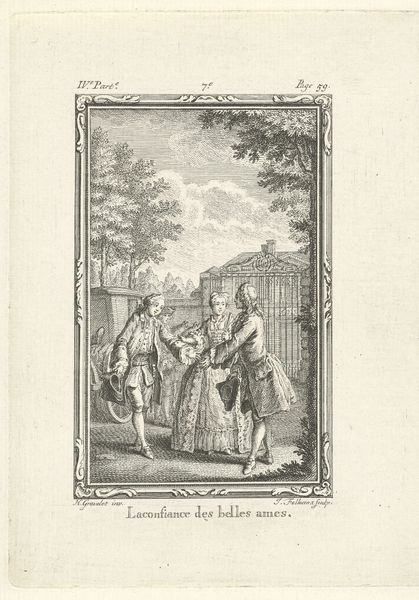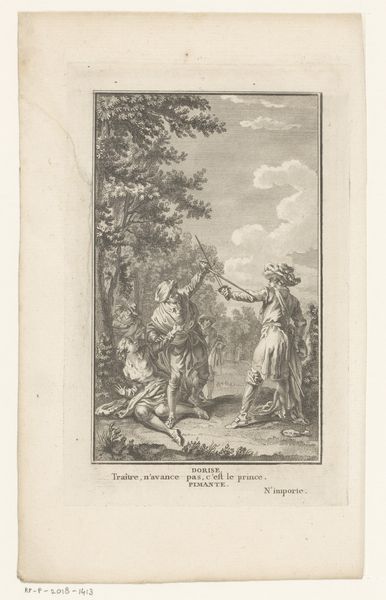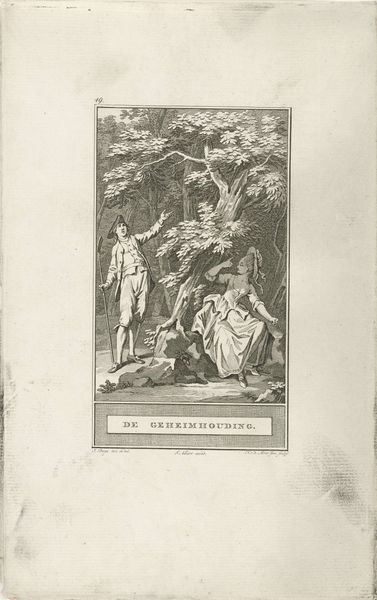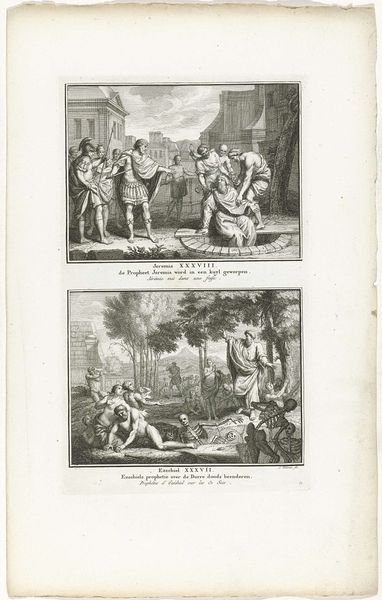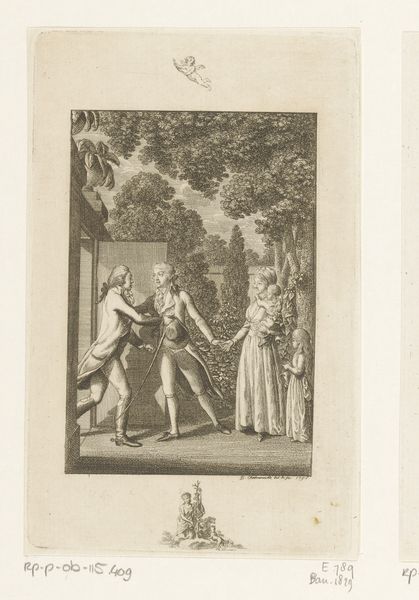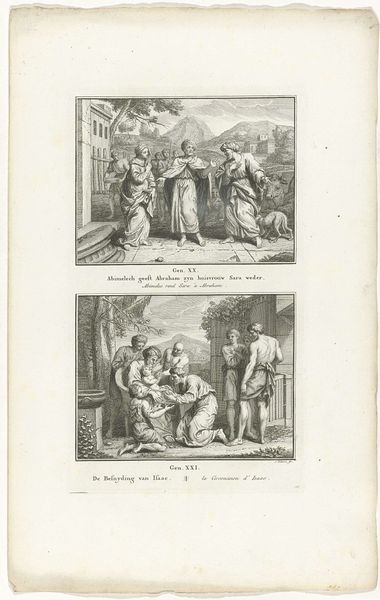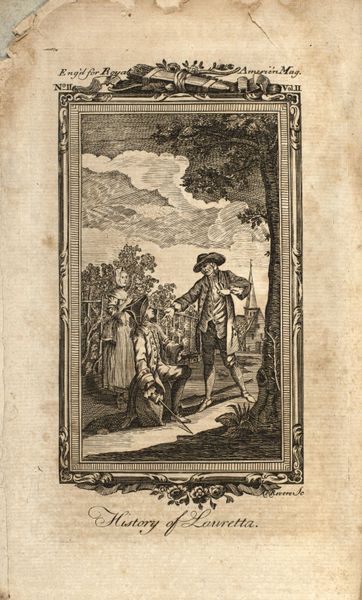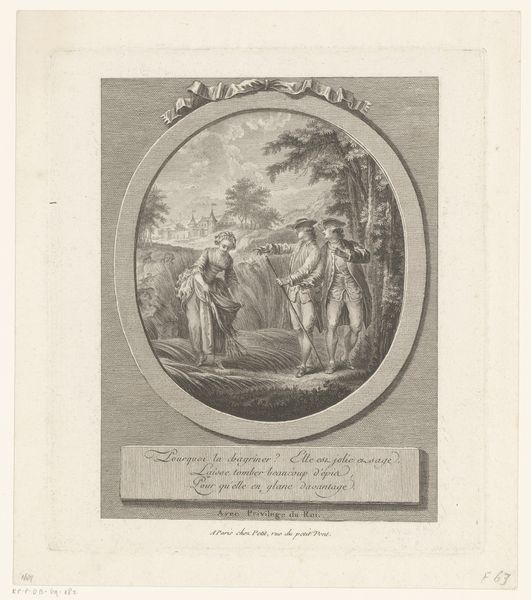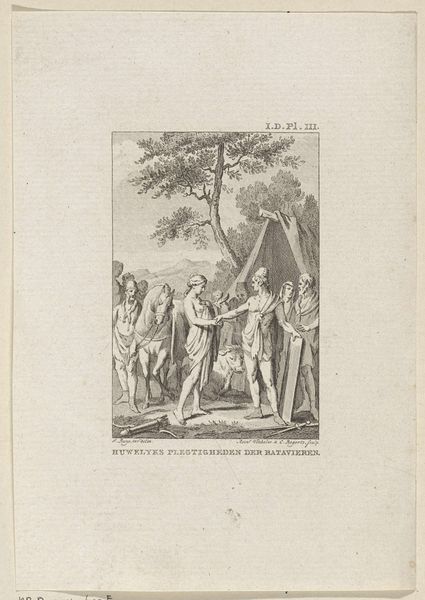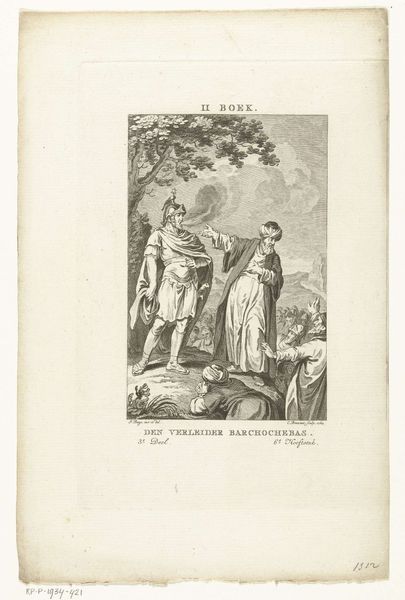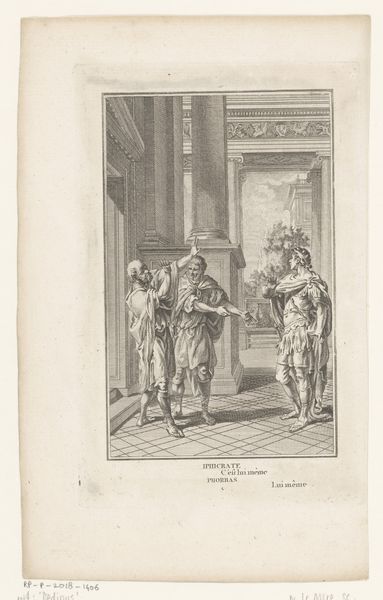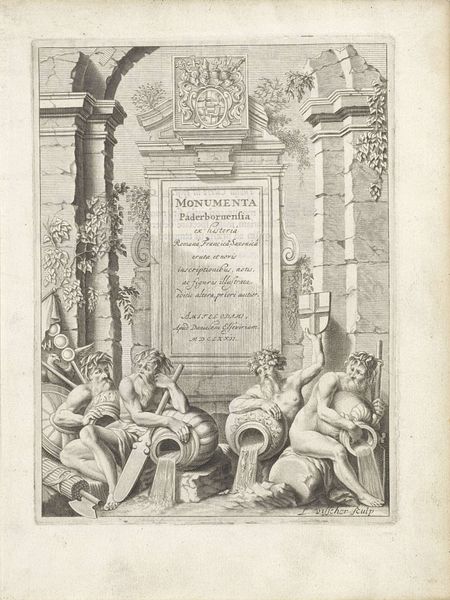
print, engraving
#
neoclacissism
# print
#
landscape
#
figuration
#
history-painting
#
engraving
Dimensions: height mm, width mm
Copyright: Rijks Museum: Open Domain
Curator: Welcome. Before us, we have Theodoor Koning’s “Voorspelling van Agrippa's geluk,” or “Prediction of Agrippa’s fortune,” dating from 1783. It's a fascinating engraving currently held at the Rijksmuseum. Editor: Immediately striking! There's a potent mix of tension and foreboding captured so well in monochrome. It reminds me of classical stagecraft. Curator: Koning crafted this engraving at a time of social upheaval and philosophical inquiry. Consider the late 18th century’s fascination with fate, luck and fortune as popular pastimes and superstitions, further informing Koning's Neoclassical approach. This is most evident through the medium, a reproducible print, making what would otherwise be unique available to a wider consumer market. Editor: And observe the composition—the gaze directed sharply, contrasting dramatically with the almost dejected posture of Agrippa leaning against a tree. Note too the classical architectural backdrop; how might it symbolize fate itself? It frames the characters’ story into something monumental. Curator: Indeed. The linear quality achieved via the engraving, meticulously cut into a metal plate and printed, mirrors the era's emphasis on rationality and order that defined Neoclassical print production, a style aimed at promoting virtue in public. One must consider how the print was distributed, too: in books, and sometimes even on the walls of private homes! Editor: Semiotically, the pointing figure signifies agency and impending action, set against the neutral background of rigid order in a perfect classical garden and temple in the distance, conveying impending doom. Curator: What I appreciate most is how it takes this notion and places it in the hands of common citizenry through consumer availability of mass produced media such as books. Art during times such as this one are paramount in recording human behaviour. Editor: This examination underscores its historical importance, doesn’t it? Understanding these historical processes is essential to fully grasp the print’s original power and message to audiences from a period gone by. Curator: Yes, exploring Koning’s engraving in its material and cultural moment deepens its narrative resonance within both the artist's hand and a philosophical context in a transformative epoch. Editor: A brilliant intersection of artistry, message, and fate—indeed. Thank you for your valuable insight.
Comments
No comments
Be the first to comment and join the conversation on the ultimate creative platform.
